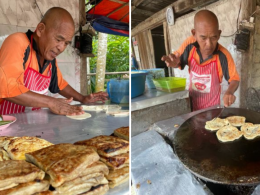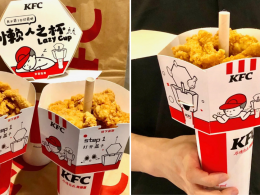Picture this: you go to a Chinese, Japanese, or Korean restaurant and take a seat. You look down at your table, and take a brief moment to admire the utensils and cutlery laid out before you. In that one moment, you are bound to notice one thing; while all three cultures feature the use of chopsticks, they all look somewhat different!
If you’ve ever wondered why chopsticks across Chinese, Japanese, and Korean cultures are shaped differently, allow us to explain!
Chinese chopsticks
In Chinese cuisine, chopsticks are referred to in Mandarin as 筷子 (kuàizi). These versions are typically the ones that come most readily to mind when one brings up the word ‘chopstick’, which comes as no surprise given how the general use of the utensil originated from China.
Quoting the California Academy of Sciences, an article by Smithsonian Magazine contributor Lisa Bramen explains that chopsticks were developed around 5,000 years ago in China. More specifically, History.com points to the Henan province where the oldest-known chopsticks were found.

Their use became widespread in 400BC when limited resources at the time meant that chefs had to begin preparing food in smaller portions so that they would cook quicker, conserving precious fuel.
Smaller portions meant that knives were no longer required when dining, leading to the adoption of chopsticks instead. Their popularity was further bolstered by Chinese philosopher Confucian, whose non-violent teachings frowned upon the use of knives as he was of the opinion that their sharp sides and points was evocative of violence and warfare.

Typically, Chinese chopsticks are of equal length and end at a blunt tip, true to Confucian’s teachings of avoiding utensils with sharp points.
Korean chopsticks
Where Korean chopsticks are concerned, their use can be traced back to around 500AD and was largely attributed to the dissemination of Confucian teachings throughout greater East Asia.
Referred to as 젓가락 (cheot-garak), the primary difference that you’ll notice between Korean and Chinese chopsticks is that the Korean versions are usually made out of metal. Why?

Well, Koreans historically have been known to use wooden chopsticks but Kim Hyung-geun’s 2012 book Ask A Korean Dude explains that the first ever set of silver chopsticks were found in the royal tomb of King Muryeong, monarch of the Baekje kingdom, who died in 523AD.
It is likely that the use of silver chopsticks began shortly before or around this period of time among members of nobility and the monarchy for a practical reason: to protect them from assassination attempts. This was due to the fact that silver had the ability of turning colour when coming into contact with poisons such as arsenic.

And of course as they were exorbitantly expensive to make, chopsticks made of silver and gold became the du rigeur for the truly well-heeled in Korea. Gradually with the discovery of stainless steel and a bronze alloy known as bangjja, metal chopsticks became increasingly commonplace in Korea, explains Korea.net.
As for their flat shape, responses from Quora claim that it was to help reduce the use of raw materials and labour as it was easier to mass produce chopsticks in a flat shape as opposed to a round one when using metal. It also made them harder to lose, as their round shape meant that they wouldn’t roll off a dining table; a crucial feature as for many Koreans back in the day, metal utensils were considered a luxury.
Japanese chopsticks
Similarly, Japanese chopsticks can also trace their origins back to around the same period as Korean chopsticks and are called 箸 (hashi). Like their Chinese counterparts, they are traditionally made from bamboo or wood, but in this case are lacquered.

According to Alan J. Wiren of Japanese Experience, chopsticks were initially used in Japan only during religious settings. The word for chopstick, hashi, was in fact also a Japanese homonym with the word ‘bridge’, implying that it would serve as a means to bridge the mortal and immortal.
It was believed that one was communing with the divine by eating with chopsticks and food that have been offered to a deity, as they would inhabit the utensil.

Of course, their use became increasingly more commonplace as time went on and are now ubiquitous in almost all Japanese dining settings. Japanese chopsticks are different compared to Chinese ones as they are typically shorter in length and are more sharply tapered.
Their shorter length is attributed to the fact that Japanese chopsticks are meant for individual servings of food, where diners did not need to reach across a table for their dishes. As for their sharpness, this was to aid in the prying of small bones from fish, which are a common feature of Japanese meals.
Tap here to give us a ‘Like’ on Facebook and stay up-to-date on the latest news!
Also read: Did you know that current Transport Minister YB Anthony Loke’s family may have invented ‘yee sang’?









